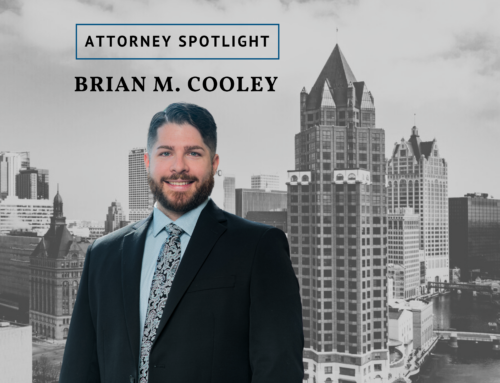Given the potential for the award of punitive damages and attorney’s fees, third-party claimants and their counsel have a clear incentive to exert pressure on an insurance company to make critical settlement decisions shortly after a loss. Typically a policy limits demand, third-party claimants and their counsel seek to settle their claims within a specified (and often condensed) timeframe in the hopes of depriving insurers of the necessary information to make informed settlement decisions. When an insurer is unable or unwilling to pay the limits on the proposed terms, the third-party claimants and their counsel will later attempt to take an assignment of the insureds’ “bad faith” claim predicated on the insurer’s failure to settle the claim within the policy limits, thereby exposing the insureds to personal liability. This is generally referred to as a bad faith “setup.”
This is not a new concept. In 1985, Justice Kaus of the California Supreme Court observed that “attorneys who handle policy claims against insurance companies are no longer interested in collecting on those claims, but spend their wits and energies trying to maneuver the insurers into committing acts which the insured can later trot out as bad faith.” White v. Western Title Ins. Co., 710 P.2d 309, 328 n.2 (Cal.) (Kaus, J., concurring and dissenting). The Tenth Circuit Court of Appeals has recognized similar concerns over “manufactured” bad faith claims, noting that “[c]ourts should exercise caution ‘when the gravamen of the complaint is not that the insurer has refused a settlement offer, but that it has delayed in accepting one.’ This caution ‘arises from the desire to avoid creating the incentive to manufacture bad faith claims by shortening the length of the settlement offer while starving the insurer of the information needed to make a fair appraisal of the case.” Wade v. EMASCO Ins. Co., 483 F.3d 657, 669 (2007). Nonetheless, third-party claimants and their counsel continue to employ this strategy to varying degrees of success. Indeed, in some jurisdictions, evidence of the “set up” is not admissible in a bad faith action.
However, a recent decision by the California Court of Appeals shows that this strategy has its limits. On August 23, 2022, the court handed down a decision in Palma v. Mercury Ins. Co. The case involved a car-on-moped collision that left the moped operator dead. Within a month of the accident, counsel for the moped operator’s estate sent a settlement demand to Mercury Insurance Company (“Mercury”), which insured Frank McKenzie, the car driver, seeking the “full policy limits,” which included $15,000 in bodily injury liability coverage and $10,000 in property damage coverage. The demand letter threatened that the estate “will determinatively prove our client’s medical expenses, and recovery will be well in excess of your insured’s policy limits.” The offer was to remain open for 14 days and was conditioned on McKenzie providing a declaration indicating he had no other insurance to cover the accident and Mercury providing an “appropriate release.”
In response, Mercury hired an attorney and instructed him to accept the offer. Within a week of the letter, counsel faxed a letter to the estate’s counsel indicating Mercury would be tendering its $15,000 policy limits to the estate and the deceased’s heirs. In addition, he enclosed an affidavit of heirs so their names could be included in the release. Counsel for the estate did not respond.
A few days later, Mercury’s retained counsel contacted McKenzie to discuss the settlement offer. McKenzie agreed to the settlement and signed a declaration stating he had no other insurance to cover the accident. Mercury’s counsel advised Mercury that he would overnight the settlement check with the release and McKenzie’s declaration to the estate’s counsel. He then advised the estate’s counsel that Mercury had accepted the offer and enclosed the check and the release. However, he inadvertently failed to enclose McKenzie’s declaration. Counsel asked the estate’s counsel to advise whether there were any changes to the release before the 14-day window expired. The estate’s counsel never responded. A month later, Mercury’s counsel mailed a check for the value of the damaged moped.
A few months later, Mercury’s counsel inquired as to the status of the release. The estate’s counsel responded that there was no settlement because the demand was for all available policy limits, including the $10,000 property damage limits. Over the next several months, Mercury continued reiterating its offer of the $15,000 bodily injury limits. Ultimately, the estate’s counsel responded that Mercury had committed bad faith by failing to accept a reasonable policy limits demand. And, for the first time, the estate’s counsel claimed Mercury failed to deliver McKenzie’s declaration timely. As a result, the estate’s counsel stated the firm would be filing a lawsuit that would drive McKenzie into bankruptcy, “destroy” his credit and embarrass McKenize and his family through post-judgment collection proceedings. Mercury’s counsel immediately sent McKenzie’s declaration and advised that he did not read the demand letter, including the property damage limits.
Almost a year after the accident, the estate’s counsel filed suit, which included a wrongful death action brought by the deceased’s family members. The matter was tried by a jury, and the court ultimately entered judgment against McKenize on the wrongful death action in the amount of $3 million. McKenzie then assigned his rights against Mercury to the plaintiffs, who sued Mercury for bad faith.
On appeal, the Court of Appeals affirmed summary judgment in favor of Mercury. Mercury had argued that only the estate had made a settlement demand (which did not include the wrongful death claims), the offer was unreasonable because it demanded the property damage limits for a moped worth less than those limits and, alternatively, that its failure to accept the settlement offer was the result of negligence, not bad faith. The Court of Appeals agreed with Mercury on all these points, holding that no reasonable jury could conclude Mercury had acted in bad faith.
The Court of Appeals, seemingly incensed by the Plaintiffs’ and their counsel’s conduct, did not stop there. The court explained that “[i]f anyone acted in bad faith, it was Plaintiffs” and their counsel. In the court’s view, the issue of McKenzie’s declaration “could have been resolved with a single phone call” and did not justify their commencement of legal proceedings against McKenzie, knowing it would “destroy” his credit and embarrass him and his family members.
Although the California Court of Appeals reached the correct decision in Palma, the bad faith “setup” remains an important strategy for third-party claimants and their counsel. Therefore, insurers with a time-sensitive demand for policy limits must respond quickly, either tendering the limits (if appropriate) or specifically identifying the information needed to complete an investigation and attempting to negotiate the deadline. Our seasoned counsel at Meissner Tierney Fisher & Nichols S.C. are well-suited to help insurers navigate these challenging circumstances. If we can be of assistance, please contact us at 414-273-1300.






